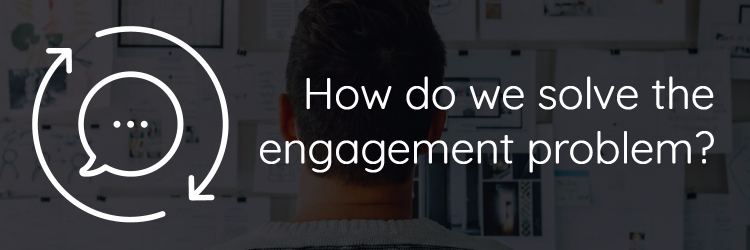Between the growing adoption of smartphones and the consumerization of healthcare, patient engagement has become a topic of focus for most health-based organizations.
by Mac GambillFounder & CEO at Nudge
Between the growing adoption of smartphones and the consumerization of healthcare, member or patient “engagement” has become a topic of focus for most health-based organizations.
Unfortunately, the bar for consumer engagement is set so low in today's healthcare system that the very definition of the word has been lost, with outreach and marketing efforts often misconstrued as engagement.
Even today, most organizations heavily rely on basic email automation and telephonic resources to educate or reach out to members in hopes of driving them towards specific programming.
It’s time to correct this misconception. Member or patient “outreach” is not the same as “engagement”.
Resources, such as email or cold calling may be appropriate for various outreach initiatives, but they are ineffective at engaging 21st century health consumers, driving any level of behavior change, or producing sustainable outcomes.
Healthcare organizations are spending billions of dollars on predictive analytics ($24.55B by 2021 with CAGR of 27.1%) to more accurately predict the outcomes and costs associated with their most at-risk, high-cost population; however, in most cases current offerings and programming are inappropriate to properly engage identified consumers.
Engagement is not an issue that can simply be solved by “throwing technology at the problem”.
The current paradigm is built around an outdated shotgun approach, but to accurately address this problem it’s critical that we recognize that a solution requires a combination of the consumer technology, and human accountability intertwined in a manner that delivers a seamless, effective experience to the consumer.
This is to say that there needs to be additional emphasis on SMS based programming.
Healthcare is largely built around synchronous forms of communication - i.e. all interactions are scheduled for a certain time between consumers and professionals - which is counter-intuitive to the trends surrounding smartphone adoption and SMS usage, not to mention shockingly inefficient.
According to ComScore, 2016 was the first year we saw smartphone adoption surpass 80% in the US, and although these devices certainly have the capability to receiving coaching calls, research suggests that SMS is the primary communication tool for those under the age of 50, and it used at least once per week by those 70 or older.
Using SMS and other types of 'asynchronous' communication to engage patients regularly could lead to staggering cost reductions in healthcare because of the amount of labor that goes into each scheduled appointment.
We made some estimates based on an internal validation experiment we recorded for this great post and you won't believe the numbers.
This post and the bonus analysis at the end break it down for you: "It's Time To Flip The Healthcare Engagement Model"
All of this suggests that to really drive engagement healthcare initiatives need to meet consumers where they are, and adopt more modern approaches that maximize convenience without automating out the professional.
People forget that “engagement” is a critical stepping stone in-between the identification of target consumer segment (through predictive analytics) and achieving any desired outcomes.
It's time to acknowledge that engagement is a prerequisite to any program's success. If you don't have a well-researched engagement strategy driving your initiative, then your chances of hitting your success metrics - getting the improved outcomes or behavior change you want - are a crapshoot at best.
Download this free guide to get 18 real life examples of how Dr. Steve delivers consistent value to patients with asynchronous communication (what we call "nudges").




